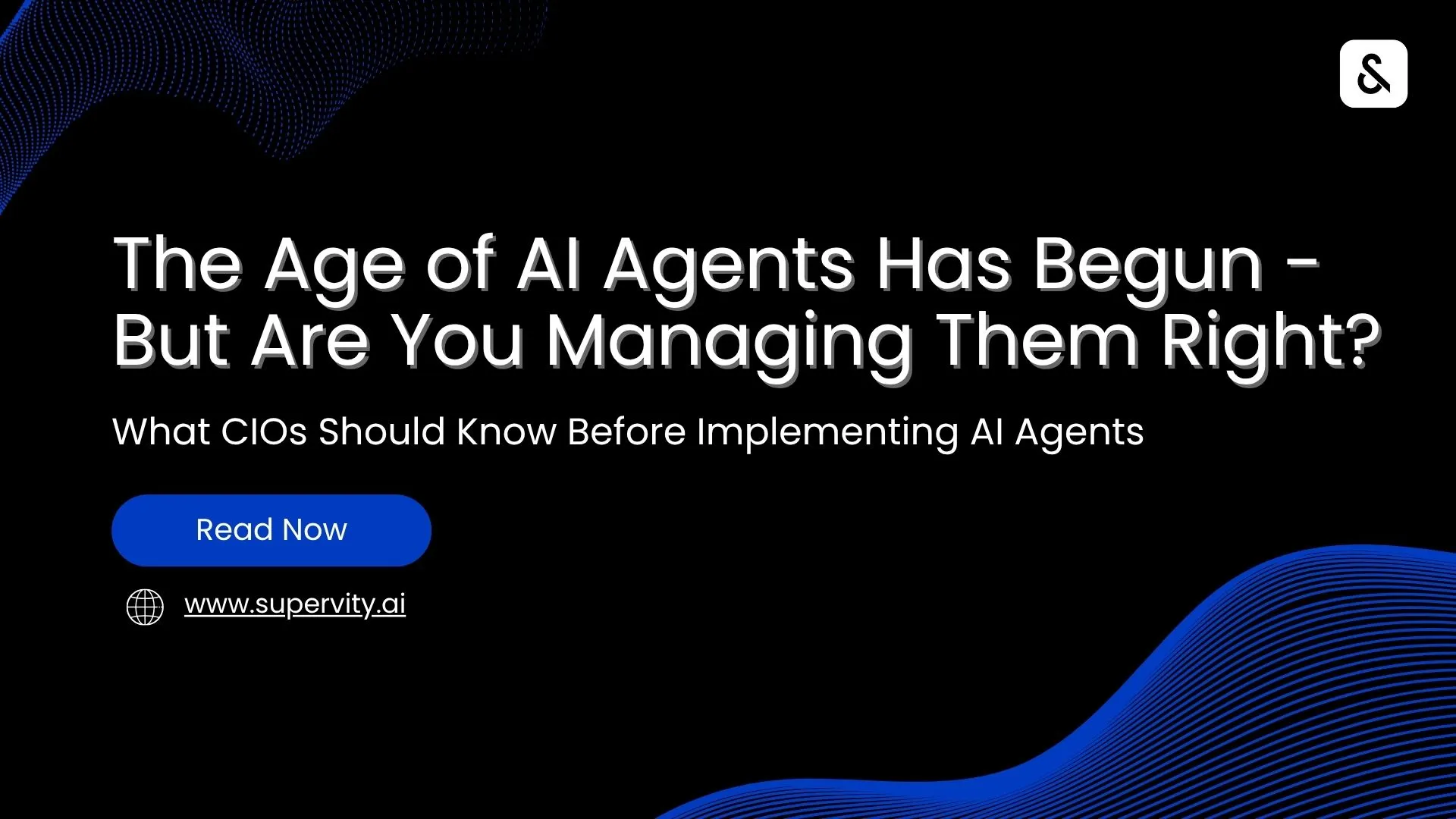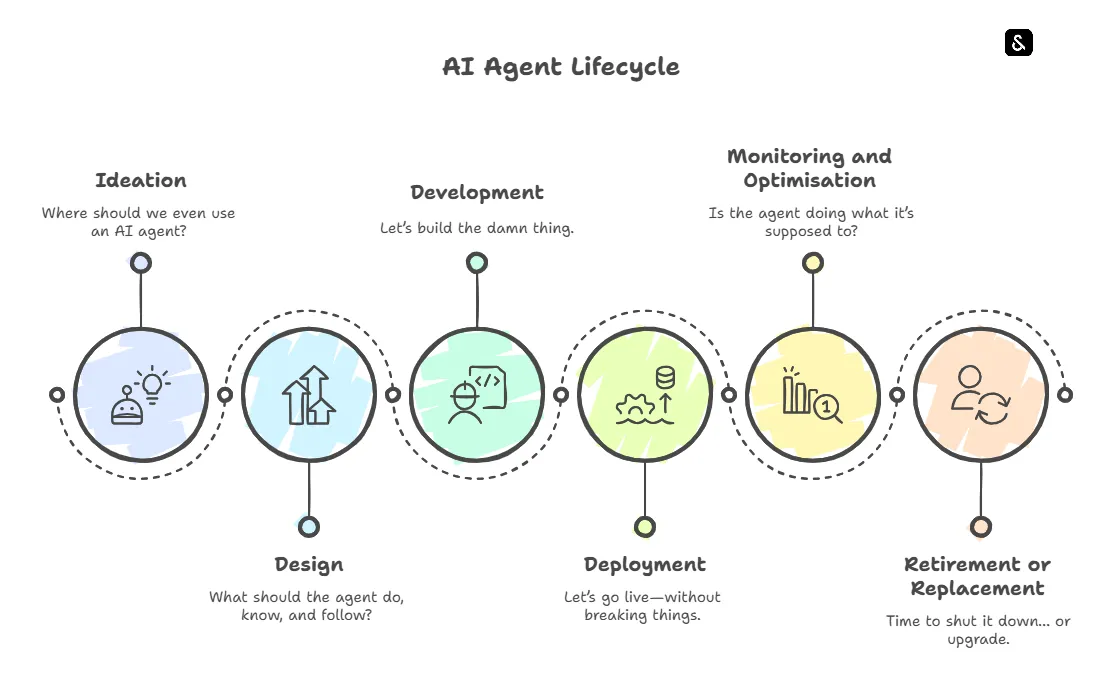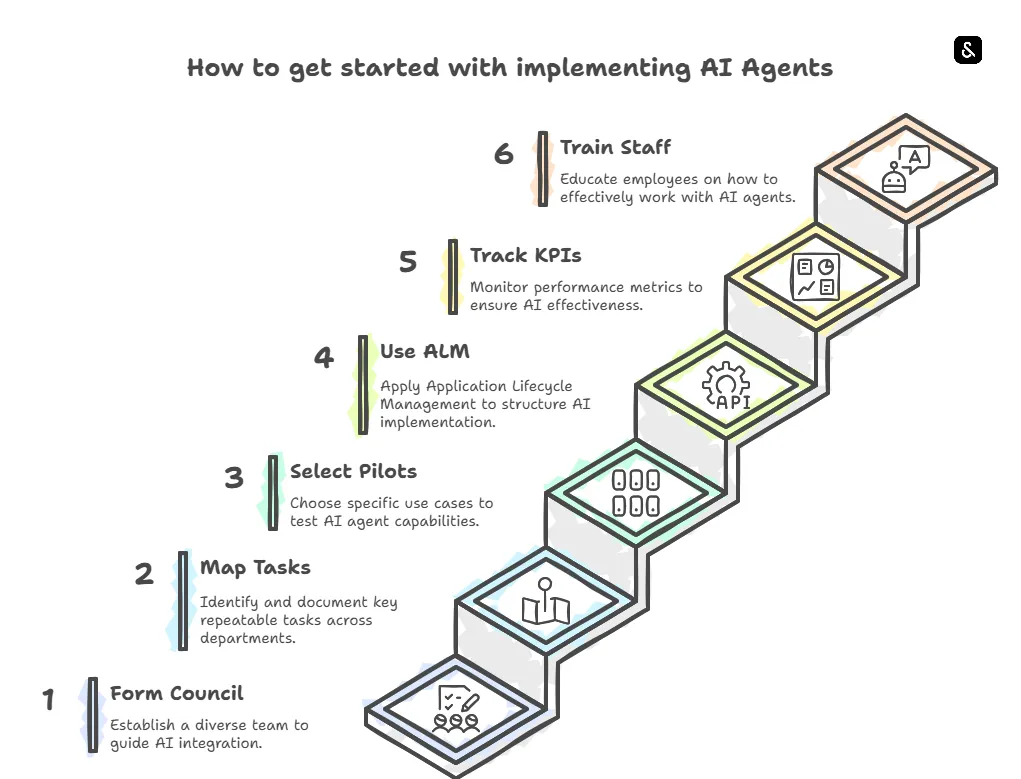
While the world obsesses over ChatGPT, behind the scenes, AI Agents are reshaping how businesses operate—one workflow, one process, one decision at a time.
But here’s the problem:
Most CIOs and IT leaders are deploying agents with zero long-term strategy. No roadmap. No lifecycle plan. No governance. Just fragmented pilots and "cool demos."
It’s like launching a fleet of autonomous vehicles without roads, traffic signals, or maps.
That’s why today’s newsletter is dedicated to a concept every CIO must master:
If you plan to scale AI Agents in your organization—across Sales, HR, Finance, Procurement, or Ops—this framework is your blueprint. It's the difference between intelligent automation and intelligent chaos.
Let’s unpack it.
AI Agents are not just glorified chatbots. They’re autonomous, goal-driven entities that can:
Think of them as mini-digital employees—but faster, cheaper, and infinitely scalable.
From Sales Research Agents that prep accounts before meetings… to Invoice Processing Agents that reconcile mismatched POs in seconds… to RAG-powered Knowledge Agents that answer complex enterprise questions…
AI Agents are turning repetitive work into code. And that code needs a lifecycle.
Here’s a hard truth: Deploying AI agents without lifecycle thinking is like building a skyscraper on quicksand.
You may survive the demo. But you’ll fail at scale.
You need to manage agents the same way you manage people or products:
That’s where AI Agent Lifecycle Management (ALM) comes in.
It’s the strategic framework Supervity uses to help organizations ideate, build, govern, deploy, and scale their agent workforce.
Let’s break it down.

“Where should we even use an AI agent?”
You don’t start with the tech. You start with the problem. This stage is all about process discovery and ROI modeling.
At Supervity, we use:
⚡ Pro tip: Prioritize use cases that are repeatable, measurable, and have clear data input/output.
“What should the agent do, know, and follow?”
This is where the blueprint gets built. You define:
The best designs don’t just document flows—they build for autonomy, safety, and scale.
“Let’s build the damn thing.”
Development doesn’t mean months of coding. With platforms like Supervity, you can build:
Your dev process should include:
“Let’s go live—without breaking things.”
This stage is less about tech, more about change management.
> Do business teams know how to interact with the agent?
> Are fallback mechanisms in place?
> Are you tracking the first 100 interactions to fine-tune behavior?
A good CIO doesn’t just deploy. They evangelize internally showcasing wins, educating skeptics, and setting realistic expectations.
“Is the agent doing what it’s supposed to?”
Post-launch, agents must be measured and improved—just like human teams.
We recommend:
Your ops team should treat this like a digital QA loop.
“Time to shut it down… or upgrade.”
Not all agents live forever. Tech evolves. Use cases change.
This stage involves:
It’s not glamorous—but it’s essential for sustainability.
Throughout the lifecycle, governance plays a key role.
You need clear rules for:
CIOs should think about Agent Access Control, Audit Trails, Bias Checks, and Failure Escalation Protocols.
Let me bring this to life:
Each of them followed the ALM lifecycle. Each saw measurable impact within 60–90 days.

1. Create a centralized AI Agent Council (include IT, ops, legal, and business leads)
2. Map top 10 repeatable tasks across departments
3. Select 2–3 pilot agent use cases
4. Use ALM to structure each stage—don't wing it
5. Track KPIs monthly and showcase internal success stories
6. Create internal training on 'How to Work With Agents'
AI Agents aren’t tools. They’re teammates.
They can write, search, extract, decide, act. But like any team, they need onboarding, coaching, monitoring—and yes, offboarding.
If you manage them with the same rigor you’d manage high-performing teams, you’ll unlock productivity that legacy systems and RPA could never deliver.
The organizations that win with AI will be the ones who manage their agents like strategic assets.
Not experiments.
And that starts with Lifecycle Thinking.
Let’s build it right.
👉 Want to see how Supervity's ALM framework works in practice?